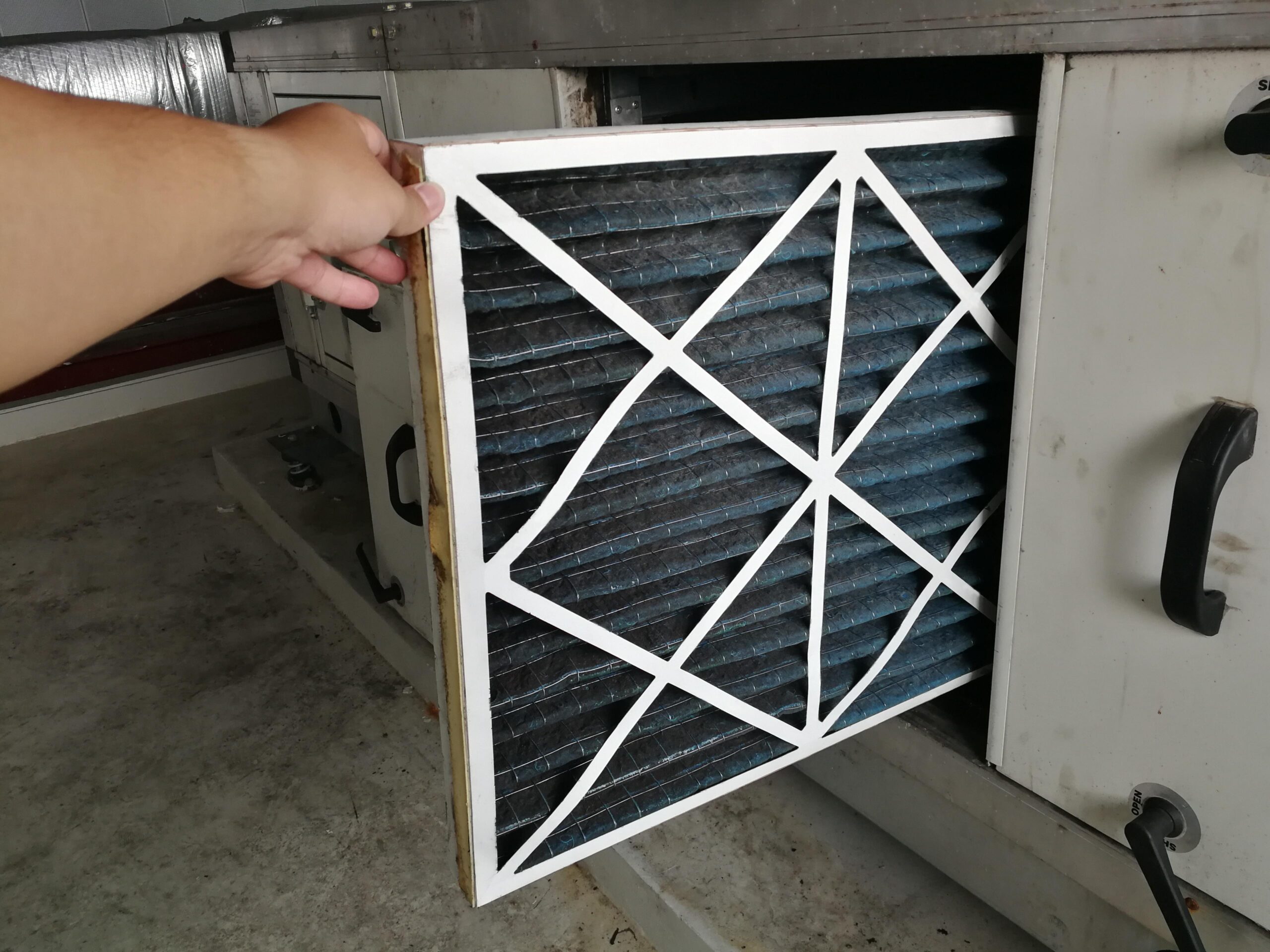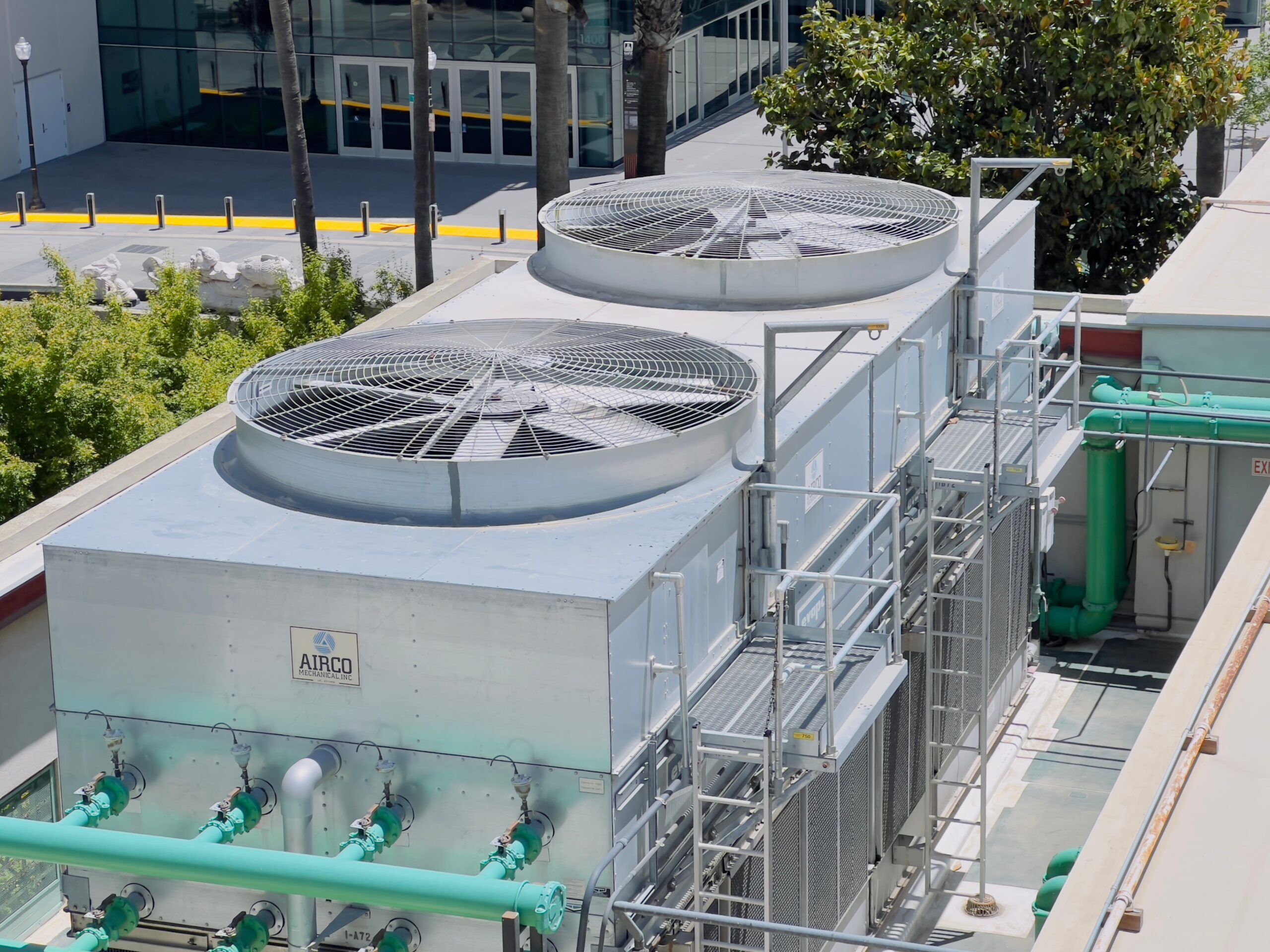Everything Homeowners Need To Know About Outdated & Unsafe Electrical Panels
Is your home’s electrical panel hiding a potential safety hazard? Many homeowners are unaware that the electrical panel—the heart of their home’s electrical system—might be putting their property and family at risk. In this comprehensive guide, we’ll explore everything you need to know about outdated and unsafe electrical panels, from identifying potential issues to understanding when and why you should upgrade.
Understanding Your Home’s Electrical Panel
Your electrical panel (also called a breaker box, fuse box, or distribution panel) is the central hub of your home’s electrical system. It receives power from the utility company and distributes it throughout your home via individual circuits. Think of it as the heart of your home’s electrical system—if it fails, everything else is affected.
Modern homes typically have circuit breaker panels, while older homes might still have fuse boxes. The panel contains either circuit breakers or fuses that protect your home by interrupting electrical flow when a circuit is overloaded or short-circuited.
What Makes Up an Electrical Panel?
A typical electrical panel consists of:
- Main breaker/disconnect: Controls power to the entire panel
- Bus bars: Metal bars that distribute electricity to individual circuits
- Circuit breakers/fuses: Protect individual circuits from overloads
- Neutral bar: Collects neutral wires from circuits
- Ground bar: Connects grounding wires for safety
- Service entrance cables: Bring power from the utility lines into your home
Understanding these components helps you recognize potential issues that might arise in outdated systems.
Signs of an Outdated or Unsafe Electrical Panel
How do you know if your electrical panel needs attention? Here are key warning signs that should prompt an immediate professional inspection:
Visual and Physical Warning Signs
- Visible rust or corrosion: Indicates moisture intrusion, which can cause short circuits and fires
- Warm or hot panel cover: Suggests overheating components inside
- Buzzing, crackling, or sizzling sounds: Indicates arcing electricity
- Burning smell: Points to overheating wires or components
- Physical damage: Dents, loose parts, or broken components compromise safety
- Discolored breakers or connections: Sign of heat damage from poor connections
- Frequently tripping breakers: Indicates inadequate capacity or failing breakers
Functional Warning Signs
- Flickering lights: Often indicates loose connections or inadequate power
- Mild shocks from appliances or outlets: Suggests grounding problems
- Need for power strips and extension cords: Indicates insufficient circuits
- Dimming lights when appliances turn on: Points to inadequate electrical capacity
- Breakers that won’t stay reset: Sign of a serious wiring problem or failing breaker
Age-Related Concerns
- Panel older than 25-30 years: Components deteriorate over time
- Original panel in a home built before 1990: Likely outdated by modern standards
- Fuses instead of circuit breakers: Indicates an older system that may need updating
- 60-amp service: Most modern homes require at least 100-200 amps
- No main disconnect: Older panels may lack this critical safety feature
If you notice any of these warning signs, it’s crucial to have your electrical panel professionally assessed as soon as possible.
Dangerous Panel Brands and Types to Watch For
Not all electrical panels are created equal. Some brands and types have documented safety issues and should be replaced regardless of their apparent condition.
Federal Pacific Electric (FPE) Panels
Federal Pacific Electric panels, particularly those with Stab-Lok breakers, were installed in millions of homes from the 1950s to the 1980s. These panels have a dangerous flaw: their circuit breakers often fail to trip when they should, creating a serious fire hazard. Studies have shown that FPE Stab-Lok breakers can fail to trip during an overload or short circuit up to 80% of the time.
How to identify: Look for “Federal Pacific Electric” or “FPE” on the panel cover, and “Stab-Lok” on the breakers themselves. These panels typically have a red strip across the front of the breakers.
Zinsco (GTE-Sylvania) Panels
Zinsco panels, also known as GTE-Sylvania panels after the company was acquired, have a critical design flaw. The aluminum bus bars inside these panels can deteriorate over time, causing breakers to melt to the bus bars. When this happens, breakers may appear to be off while still allowing electricity to flow, creating a significant fire risk.
How to identify: Look for “Zinsco” or “GTE-Sylvania” on the panel. These panels often have colorful breakers (red, blue, green, etc.).
Pushmatic Panels
While not as inherently dangerous as FPE or Zinsco panels, Pushmatic panels (manufactured by Bulldog) are outdated and replacement parts are increasingly difficult to find. They use a mechanical push-button operation and are known to develop problems with their internal springs and mechanisms over time.
How to identify: Look for “Pushmatic” or “Bulldog” on the panel. These have distinctive push-button breakers rather than the toggle switch found on modern breakers.
Fuse Boxes
Fuse boxes aren’t inherently dangerous when properly maintained and not overloaded, but they have significant limitations:
- Limited capacity (typically 30-60 amps) that doesn’t meet modern household demands
- Tendency for homeowners to use oversized fuses to prevent blowing, which eliminates protection
- No GFCI or AFCI protection capabilities
- Difficulty obtaining insurance with fuse-based systems
How to identify: Rather than breakers with switches, fuse boxes contain screw-in fuses that look similar to light bulbs.
Split-Bus Panels
Split-bus panels lack a main disconnect and instead use up to six breakers as service disconnects. While not necessarily dangerous by design, these panels are outdated and don’t meet current code requirements for new installations.
How to identify: These panels have a section at the top with 4-6 breakers that control power to the rest of the panel, rather than a single main breaker.
A Deep-dive Into Electrical System Lifespans
Understanding the expected lifespan of your electrical system components helps you plan for necessary upgrades and replacements before safety issues arise.
Electrical Panel Lifespan
- Modern circuit breaker panels: 25-40 years under ideal conditions
- Circuit breakers themselves: 15-20 years before mechanical wear affects performance
- Older panels (pre-1990): May already be beyond their safe service life
- Fuse boxes: Consider immediate replacement regardless of age
Factors That Reduce Electrical Panel Lifespan
Several factors can significantly shorten the useful life of an electrical panel:
- Moisture exposure: Panels in damp basements or exposed to water infiltration deteriorate faster
- Frequent overloading: Regularly tripped breakers wear out mechanical components more quickly
- Poor installation: Improper installation can cause premature failure
- Environmental factors: Extreme temperatures, high humidity, or salt air (coastal areas) accelerate deterioration
- Manufacturing quality: Some brands simply don’t last as long as others
When Replacement Makes Sense Even Before Failure
Even if your panel appears to be functioning, replacement might be warranted if:
- Your home’s electrical demands have increased significantly
- You’re renovating or adding major appliances
- Your insurance company requires an upgrade
- You have one of the problematic panel types mentioned earlier
- Your panel lacks modern safety features
- The panel is more than 25 years old
- You’re experiencing minor but persistent electrical issues
Remember that electrical panels don’t usually fail catastrophically without warning signs. Regular professional inspections can identify issues before they become dangerous.
Modern Protection Requirements and Safety Features
Electrical codes have evolved significantly over the decades, with each update focusing on enhanced safety. Here’s what modern electrical panels offer that older ones typically lack:
Circuit Breaker Technology Advances
- AFCI (Arc Fault Circuit Interrupter) protection: Detects dangerous electrical arcs and disconnects power before fires can start
- GFCI (Ground Fault Circuit Interrupter) protection: Prevents electrical shocks by detecting current leaks
- Dual-function AFCI/GFCI breakers: Provide both types of protection in a single unit
- Electronic trip mechanisms: More reliable and precise than older mechanical systems
- Surge protection: Built-in protection against power surges that damage electronics
Panel Design Improvements
- Higher capacity: Modern homes typically need 100-200 amp service
- More circuits: Accommodates increased number of appliances and electronics
- Copper bus bars: More durable and less fire-prone than aluminum
- Better labeling systems: Clearer identification of circuits
- External main disconnects: Required by newer codes for emergency power shutdown
- Tamper-resistant features: Prevent unauthorized access
Code Requirements That Older Panels May Not Meet
The National Electrical Code (NEC) is updated every three years, with each revision enhancing safety requirements. Older panels often fail to meet these updated standards:
- Dedicated circuits: Modern appliances require dedicated circuits
- AFCI protection: Required for most living area circuits since early 2000s
- GFCI protection: Required in wet areas and expanded to more locations with each code update
- Proper spacing and accessibility: Current code requires specific clearances around panels
- Bonding and grounding: More stringent requirements in modern codes
- Weatherproofing: Enhanced requirements for outdoor panels
While existing installations are typically “grandfathered in,” these outdated panels don’t provide the same level of protection as modern systems.
The Importance of Proper Grounding
Grounding is one of the most critical safety features of any electrical system, yet it’s often overlooked or improperly implemented in older installations.
What Is Grounding and Why Is It Essential?
Electrical grounding provides a path of least resistance for electrical current to flow safely to the earth in case of a fault. Without proper grounding:
- Faulty appliances can energize their metal cases, causing shock hazards
- Lightning strikes can damage your electrical system and connected devices
- Electrical noise can interfere with electronics and sensitive equipment
- Unstable voltage can damage appliances and electronics
Common Grounding Problems in Older Panels
- No grounding system at all: Some very old homes were wired before grounding was required
- Improper grounding connections: Loose or corroded connections reduce effectiveness
- Missing ground rods or inadequate grounding electrodes: Compromises the entire system
- Neutral-ground bonds in subpanels: Creates dangerous parallel paths for current
- Inadequate wire size for ground conductors: Cannot handle fault currents safely
Modern Grounding Requirements
Current electrical codes require:
- At least one 8-foot copper ground rod driven into the earth
- Often a second ground rod or connection to a water pipe
- Proper bonding of all metal components (water pipes, gas lines, etc.)
- Correct wire sizing for ground conductors
- Separation of neutral and ground in subpanels
- Equipotential bonding for pools, spas, and outbuildings
A professional electrician from Jack Lehr can evaluate your home’s grounding system and bring it up to modern standards, significantly enhancing your electrical safety.
GFCI, AFCI, and Other Critical Protection Devices
Modern electrical systems include specialized protection devices that older panels typically lack. Understanding these technologies helps illustrate why upgrading is often a safety necessity.
Ground Fault Circuit Interrupter (GFCI) Protection
GFCIs monitor the current flowing through the hot and neutral wires. If even a small amount of current (as little as 5 milliamps) leaks to ground—possibly through a person—the GFCI trips almost instantly, preventing deadly shocks.
Where GFCIs are now required:
- Bathrooms
- Kitchens
- Garages and accessory buildings
- Outdoor outlets
- Crawl spaces
- Unfinished basements
- Laundry areas
- Near sinks or water sources
- Pool and spa areas
Older homes often lack this critical protection, especially if the electrical panel hasn’t been updated.
Arc Fault Circuit Interrupter (AFCI) Protection
AFCIs detect dangerous electrical arcs that can cause fires. Unlike standard breakers that only trip on significant overloads or short circuits, AFCIs can detect the distinctive electronic signature of hazardous arcs and disconnect power before a fire starts.
Where AFCIs are now required:
- Bedrooms
- Living rooms
- Dining rooms
- Rec rooms
- Closets
- Hallways
- Similar areas
AFCI protection only became widely required in the early 2000s, so most homes with electrical panels installed before then lack this important safety feature.
Surge Protection
Modern electrical panels can include whole-house surge protection that safeguards all connected devices from power spikes caused by:
- Lightning strikes
- Power grid switching
- Large appliances cycling on and off
- External power fluctuations
- Holiday lighting displays
This protection is particularly important given the increasing number of sensitive electronics in the average home.
Combination Devices and Whole-House Protection
The latest electrical panels can incorporate:
- Combination AFCI/GFCI breakers that provide both types of protection
- Whole-house surge protection built into the panel
- Intelligent circuit monitoring capabilities
- Remote circuit control options
- Energy usage monitoring
Upgrading to a modern panel with these features not only enhances safety but also provides convenience and potential energy savings.
Code Compliance and Insurance Considerations
Beyond safety concerns, there are practical and financial reasons to ensure your electrical panel meets current standards.
National Electrical Code (NEC) Updates
The NEC is updated every three years, with each revision enhancing safety requirements. While existing installations are typically “grandfathered in,” be aware that:
- Significant renovations often trigger requirements to update to current codes
- Some local jurisdictions have more stringent requirements than the national code
- Insurance companies may have their own standards that exceed “grandfathered” allowances
Insurance Implications of Outdated Panels
Many insurance companies have become increasingly stringent about electrical systems:
- Some refuse to insure homes with fuse boxes or certain brands of problematic panels
- Others charge significantly higher premiums for homes with outdated electrical systems
- Claims related to electrical fires may be denied if the panel was known to be defective
- Home sales can be delayed or canceled when inspection reveals problematic panels
- Some lenders require panel upgrades as a condition of mortgage approval
Cost vs. Risk Assessment
When weighing the cost of an electrical panel upgrade against keeping an outdated system, consider:
- The average cost of an electrical panel replacement ($1,500-$3,500) versus the average cost of a home fire ($12,000+)
- Potential insurance savings over time with a modern, code-compliant panel
- Increased home value and improved saleability with updated electrical systems
- Peace of mind from knowing your home has modern safety features
- The potential liability of knowingly maintaining an unsafe electrical system
Jack Lehr’s professional electricians can help you navigate these considerations with a thorough assessment of your current system and clear recommendations for necessary upgrades.
The Professional Inspection Process
Given the technical nature and safety implications of electrical panels, professional inspection is essential. Here’s what to expect from a comprehensive electrical panel inspection from a qualified electrician:
What a Professional Electrician Checks
- Visual inspection: Examining the panel for physical damage, rust, corrosion, or signs of overheating
- Thermal scanning: Using infrared technology to detect hot spots that indicate problems
- Load calculation: Assessing whether your panel can safely handle your home’s electrical demands
- Breaker functionality testing: Ensuring breakers trip when they should
- Torque testing: Checking that connections are properly tightened
- Grounding verification: Confirming proper grounding and bonding
- Code compliance assessment: Identifying areas where the system falls short of current requirements
- Brand/model verification: Checking for known problematic panel types
- Service capacity evaluation: Determining if your service size meets your needs
- Wiring condition assessment: Looking for damaged or improperly sized wires
Red Flags That Require Immediate Attention
Certain findings during an inspection require urgent action:
- Evidence of water infiltration or moisture damage
- Signs of previous electrical fires or arcing
- Overheated components
- Multiple tapped breakers (more than one wire under a single breaker)
- Aluminum wiring with improper connections
- Missing knockouts creating fire pathway
- Damaged or compromised insulation
- Panel manufactured by companies with known safety issues
- Improperly bonded neutral and ground connections
- Oversized fuses or breakers for the wire rating
The Jack Lehr Inspection Difference
At Jack Lehr Heating, Cooling & Electric, our electrical inspections go beyond the basics:
- Comprehensive evaluation: We examine your entire electrical system, not just the panel
- Advanced diagnostic tools: We use thermal imaging and electronic testing equipment
- Clear documentation: You receive detailed findings and recommendations
- Educational approach: We explain issues in easy-to-understand terms
- No-pressure recommendations: We prioritize safety concerns from critical to optional
- Upfront pricing: Clear costs for any recommended repairs or upgrades
- Follow-up support: Continued assistance after any work is completed
Benefits of Upgrading Your Electrical Panel
Upgrading an outdated electrical panel provides numerous advantages beyond basic safety:
Safety Enhancements
- Reduced fire risk: Modern panels with properly functioning breakers significantly reduce electrical fire hazards
- Shock protection: GFCI technology provides much better protection against electrical shocks
- Arc fault protection: AFCI technology prevents fires from damaged or deteriorated wiring
- Elimination of known hazards: Replacement of panels with documented safety issues
- Proper grounding: Enhanced protection during lightning strikes and electrical faults
Practical Benefits
- Increased capacity: Support for modern appliances and electronics without overloads
- More circuits: Better distribution of electrical loads throughout your home
- Fewer tripped breakers: Less disruption from overloaded circuits
- Support for renovations: Capacity for additional circuits when remodeling
- Accommodation for high-demand additions: Support for electric vehicle chargers, hot tubs, etc.
Financial Advantages
- Lower insurance premiums: Many insurers offer discounts for updated electrical systems
- Increased home value: Updated electrical systems can increase property values by 3-5%
- Energy efficiency: Better distribution of power can improve overall efficiency
- Avoided emergency costs: Planned upgrades cost less than emergency replacements
- Protection for electronic investments: Better surge protection for expensive electronics
Future-Proofing Benefits
- Smart home compatibility: Support for home automation and smart devices
- Electric vehicle readiness: Capacity for car chargers as gas vehicles are phased out
- Solar panel compatibility: Easier integration with renewable energy systems
- Expandability: Space for additional circuits as needs evolve
- Code compliance: Meeting current standards that will likely be enforced during future home sales
How Jack Lehr Can Help Secure Your Home’s Electrical System
Jack Lehr Heating, Cooling & Electric has been serving the Lehigh Valley and surrounding areas for over 50 years. Our expert electricians specialize in electrical panel inspections, upgrades, and replacements.
Our Electrical Panel Services
- Comprehensive panel inspections: Thorough evaluation of your electrical panel and system
- Panel upgrades: Increasing service capacity to meet modern demands
- Panel replacements: Complete replacement of outdated or unsafe panels
- Code compliance upgrades: Bringing your system up to current standards
- Emergency replacements: Rapid response for urgent situations
- Whole-house surge protection: Installation of advanced surge protection systems
- Smart panel installations: Integration of monitoring and control capabilities
The Jack Lehr Difference
When you choose Jack Lehr for your electrical panel needs, you benefit from:
- Licensed, experienced electricians: Our team has the training and expertise to handle any electrical challenge
- Comprehensive knowledge: We stay current with the latest electrical codes and best practices
- Quality materials: We use only top-quality components from respected manufacturers
- Proper permits and inspections: All work is performed legally and to code
- Detailed estimates: Clear, upfront pricing without surprise charges
- Respectful service: Our technicians treat your home with care and cleanliness
- Ongoing support: We stand behind our work with excellent warranties and service
- Peace of mind: Knowing your electrical system is safe and reliable
Our Process
- Initial consultation: We discuss your concerns and electrical needs
- Thorough inspection: We evaluate your current electrical panel and system
- Clear recommendations: We provide detailed findings and suggestions
- Written estimate: You receive comprehensive pricing for recommended work
- Professional installation: Our licensed electricians perform all work to code
- Final inspection: We verify everything meets our high standards
- Education: We show you how to use your new panel safely
- Follow-up: We check in to ensure your complete satisfaction
FAQs About Electrical Panel Safety
How do I know if my electrical panel is unsafe?
Warning signs include frequent breaker trips, flickering lights, warm panel covers, buzzing sounds, burn marks, rust or corrosion, and breakers that won’t stay reset. Also, if your panel is a Federal Pacific Electric, Zinsco, or fuse box, it should be evaluated immediately regardless of apparent condition.
How much does an electrical panel replacement cost?
While costs vary based on your specific needs, most residential panel replacements range from $1,500 to $3,500. Factors affecting cost include service size (100A vs. 200A), accessibility, necessary rewiring, and local permit requirements. Jack Lehr provides detailed, transparent pricing during our consultation.
Can I stay in my home during an electrical panel replacement?
In most cases, yes. A typical panel replacement requires power to be shut off for 4-8 hours. Our team works efficiently to minimize disruption, and we can schedule work to accommodate your needs whenever possible.
How long does an electrical panel replacement take?
Most standard panel replacements can be completed in one day. More complex situations involving service upgrades or extensive rewiring might require 1-2 days. Jack Lehr provides timeline estimates specific to your situation.
Will upgrading my electrical panel lower my electric bill?
While a panel upgrade itself doesn’t directly reduce electricity usage, it can improve efficiency by providing better power distribution and reducing voltage drops. The primary benefits are improved safety, capacity, and reliability rather than energy savings.
Do I need to upgrade my panel if I’m adding solar power?
In many cases, yes. Solar installations often require dedicated circuits and may necessitate a service upgrade to accommodate bidirectional power flow. Our electricians can evaluate your current panel and make appropriate recommendations for solar readiness.
How often should my electrical panel be inspected?
We recommend a professional electrical inspection every 3-5 years for homes with modern panels, and more frequently (every 1-2 years) for homes with panels over 25 years old or those showing any warning signs. Regular inspections can identify problems before they become dangerous.
Take Action to Protect Your Home and Family
Don’t wait for an electrical emergency to address potential safety issues with your home’s electrical panel. Contact Jack Lehr Heating, Cooling & Electric today for a comprehensive electrical panel inspection and personalized recommendations.
Our team of expert electricians serves the entire Lehigh Valley region, including Allentown, Bethlehem, Easton, and surrounding communities. We offer same-day service for urgent concerns and convenient appointment scheduling for routine inspections and upgrades.
Protect your home with professional electrical services from the company your neighbors have trusted for over 50 years. Jack Lehr Heating, Cooling & Electric—where your family’s safety is our top priority.
Questions or need more information?
Contact Us


We Treat You Like Family
When you choose Jack Lehr Heating Cooling & Electric, you’ll benefit from our:
When you choose Jack Lehr Heating Cooling & Electric, you’ll benefit from our:
- 50+ years of experience
- Our installation and service guarantees
- Top-of-the-line products
- Respect for your home or business
- Financing options
- And much more!



